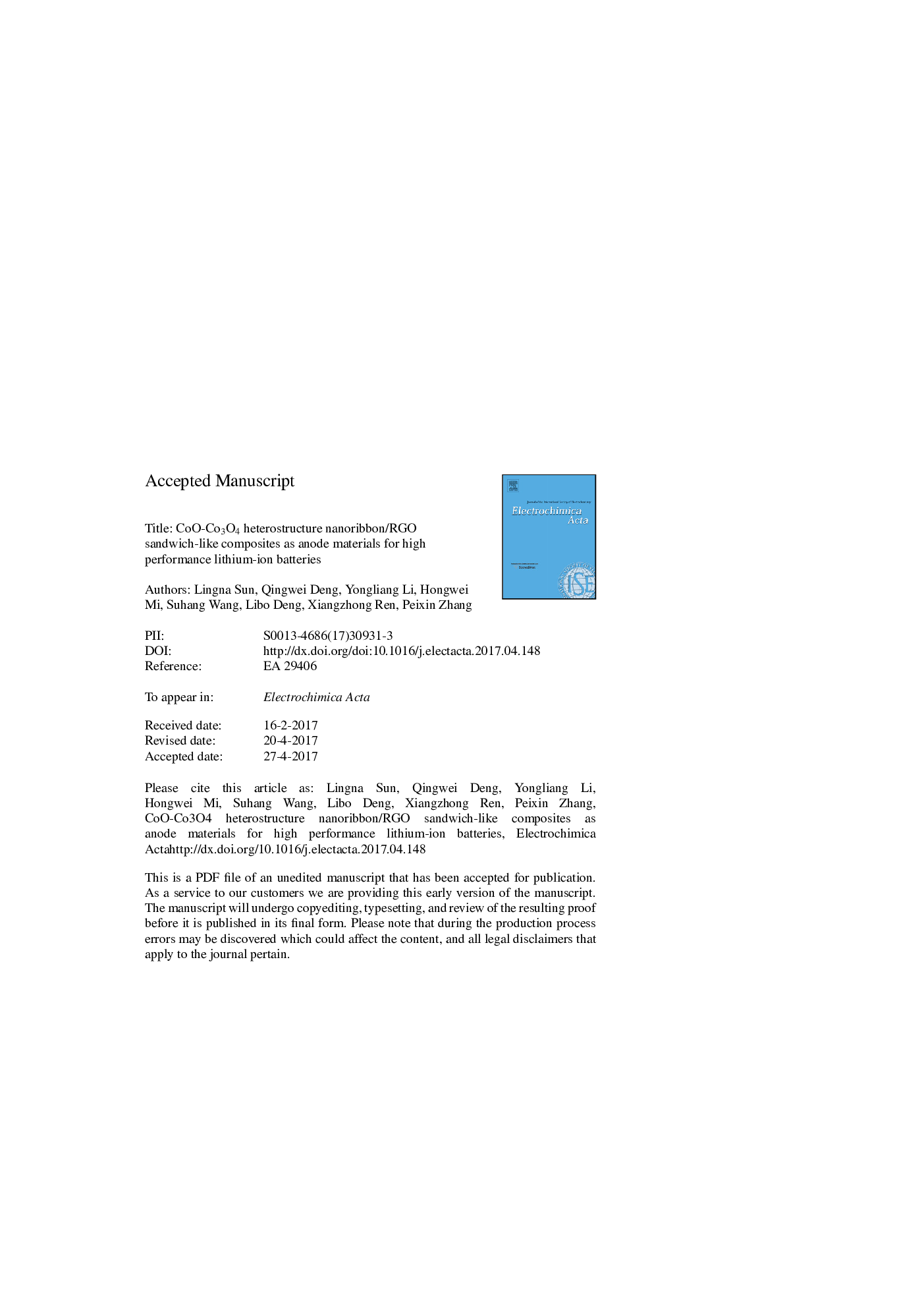| Article ID | Journal | Published Year | Pages | File Type |
|---|---|---|---|---|
| 4767014 | Electrochimica Acta | 2017 | 31 Pages |
Abstract
CoO-Co3O4 heterostructure nanoribbons were successfully sandwiched between reduced graphene oxide (RGO) nanosheets through a facile solvothermal method and sintering process, which used directly as the anode material for lithium ion batteries. The as-prepared ultrathin CoO-Co3O4 nanoribbon/RGO sandwich-like nanostructures (CoO-Co3O4-RGO) delivers a reversible capacity of 994 mAh gâ1 at a current density of 100 mA gâ1 after 200 cycles. Even at a high charge-discharge rate of 1000 mA gâ1, CoO-Co3O4-RGO still demonstrate a reversible capacity of 395 mAh gâ1 after 500 cycles. The rate capability of CoO-Co3O4-RGO evaluated by the ratio of capacity at 100, 200, 500, 1000, 2000, 5000 and 100 mA gâ1 after each 10 cycles was about 1210, 1060, 890, 730, 578, 392 and 915 mAh gâ1, respectively. The greatly enhanced performances for CoO-Co3O4-RGO may be ascribed to the synergistic effects: The multicomponent generates hybridizing advantages; The mutual influence of both CoO-Co3O4 nanoribbons and RGO nanosheets decreases the aggregation; The two-dimensional (2D) nanoribbons with the short lithium ion diffusion and 2D RGO sheets as conductive network built an efficient three dimensional (3D) storage active material.
Related Topics
Physical Sciences and Engineering
Chemical Engineering
Chemical Engineering (General)
Authors
Lingna Sun, Qingwei Deng, Yongliang Li, Hongwei Mi, Suhang Wang, Libo Deng, Xiangzhong Ren, Peixin Zhang,
